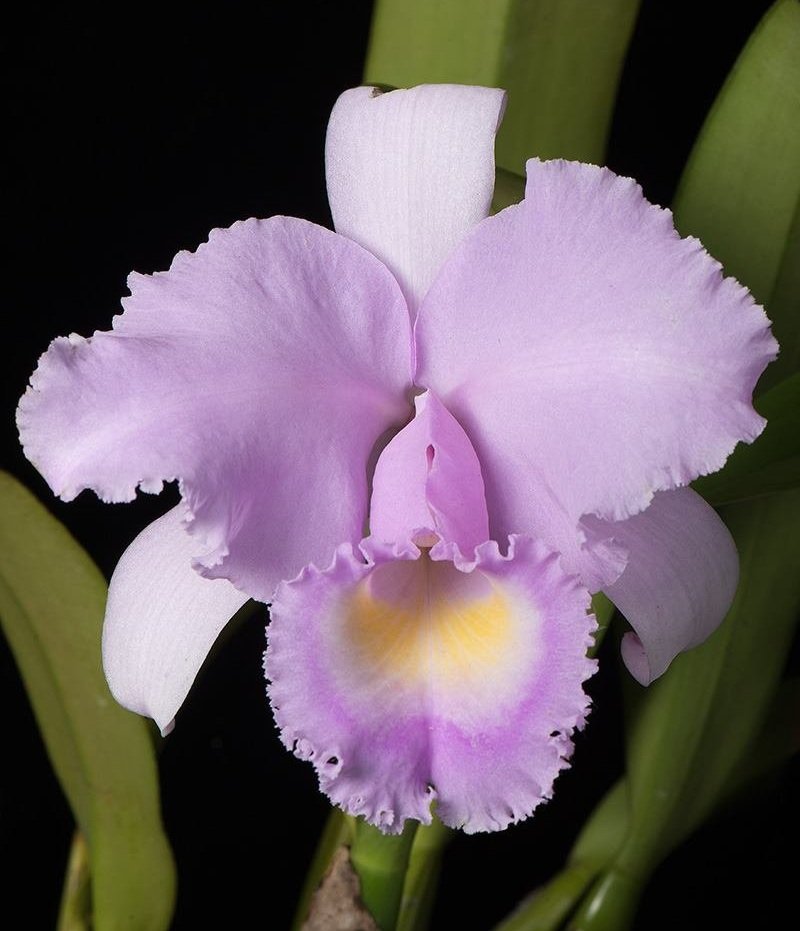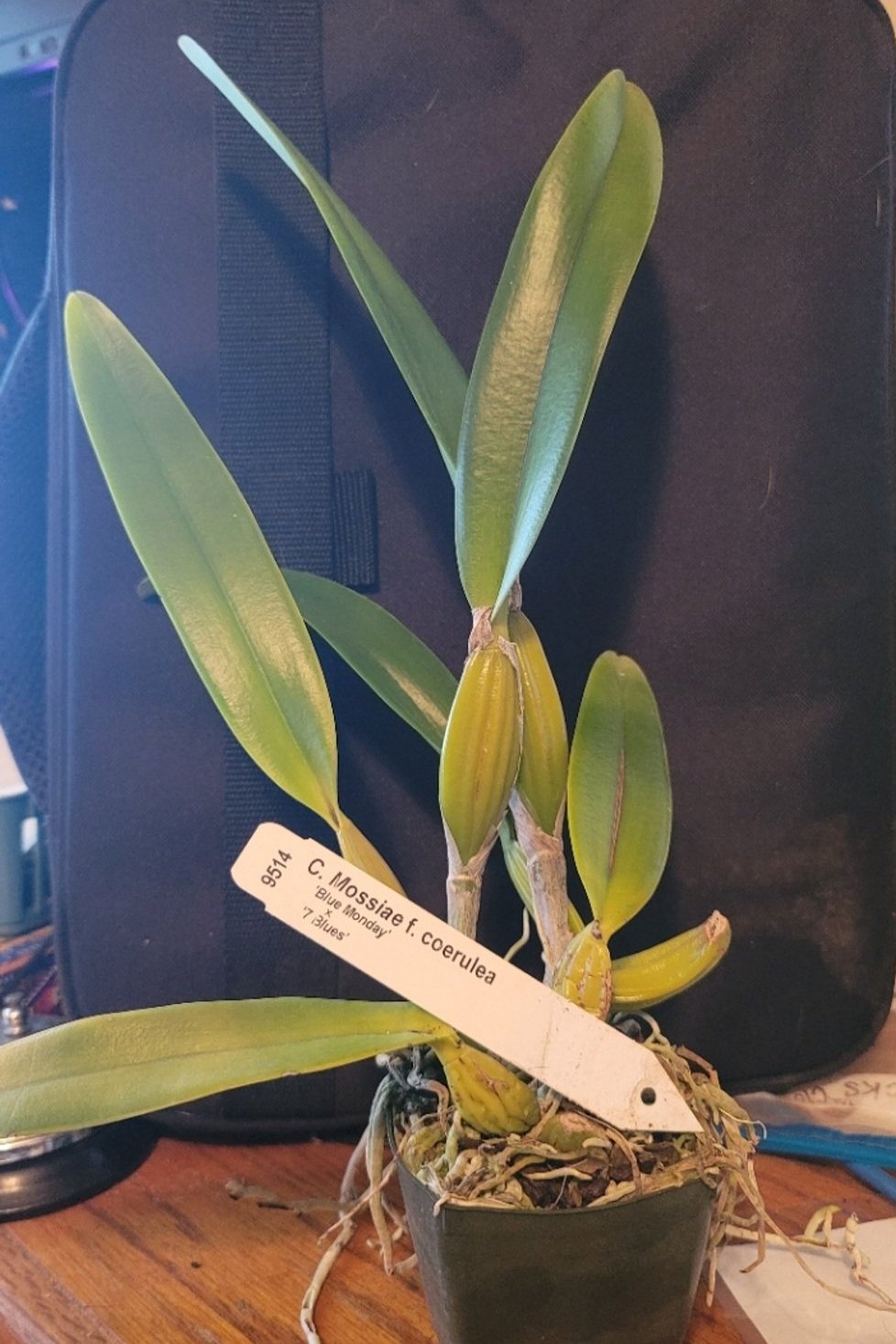Growing Conditions
Light: Bright, indirect light (2,500-3,500 foot-candles). Morning sun or filtered light suits it best.
Temperature: Intermediate to warm, 60°F-85°F (15.5°C-29°C). Tolerates cooler nights (50°F/10°C) in winter.
Humidity: 50%-70%. Higher humidity aids growth, especially during active periods.
Watering: Water when the medium (coarse bark or mounted) dries—weekly in summer, less in winter during rest. Avoid water in sheaths.
Fertilizer: Weekly 1/2 strength orchid fertilizer (e.g., 20-20-20) during growth (spring-summer), reduced in fall-winter.
Blooming
Season: Late winter to spring (February-April), blending trianae’s winter peak with schroederae’s spring timing.
Trigger: A dry rest in late fall/winter (reduced watering after pseudobulbs mature) followed by increased light and water.
Duration: Flowers last 2-4 weeks, longer in cooler, humid conditions.
Unique Traits
Concolor Rarity: Uniformly colored Cattleya hybrids are less common, as most Cattleya hybrids favor contrasting lips. Cappei var. concolor offers a subtle, elegant alternative.
Heritage: Combines schroederae’s delicate tones and fragrance with trianae’s vigor and flower size, softened into a monochromatic palette.
Appeal: Ideal for collectors seeking understated beauty over flashy contrasts.
Care Tips
Potting: Use medium to coarse bark or mount on cork/wood. Repot post-blooming when new roots emerge.
Rest Period: Reduce water in winter to mimic its seasonal cycle, resuming with spring growth.
Pests: Check for scale or spider mites, typical Cattleya issues, though not especially prone.
Cultural Notes
Availability: Cattleya Cappei (1902) isn’t as widely grown as modern hybrids, and the concolor form is even rarer. Specialty nurseries or orchid societies might offer it, often as mericlones or seedlings from select parents.
Context: Reflects a period when primary hybrids showcased species traits, with concolor catering to enthusiasts of uniform elegance.















